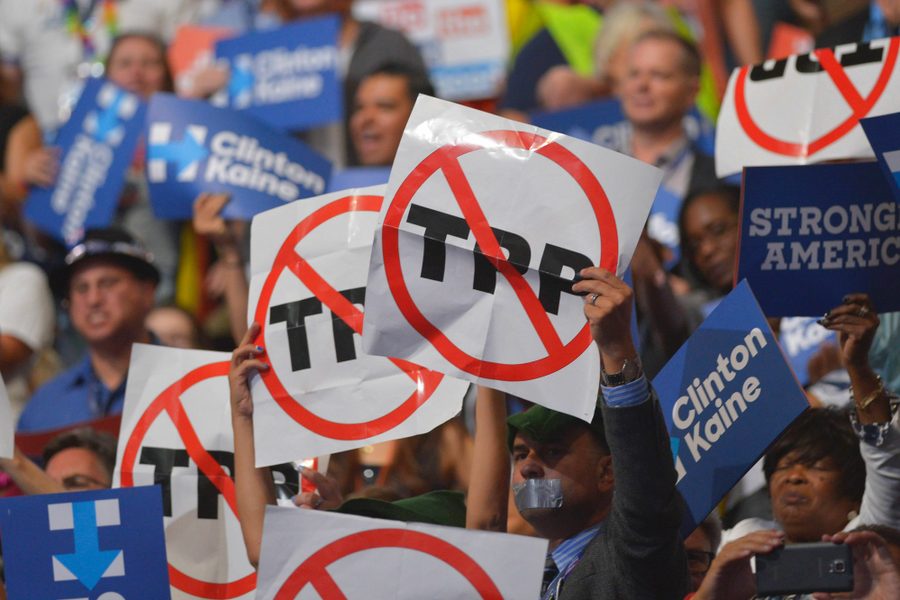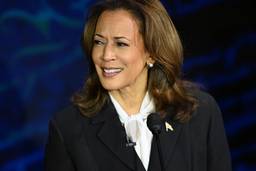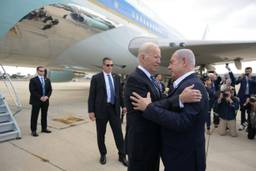A Behind-the-Scenes Tour of the Clinton Campaign’s Calculated Decision to Oppose the TPP
Branko Marcetic

How do political leaders decide to take a stance on an issue? Does it come down to principle, a matter of drawing a line that they refuse to cross? Or do they examine pages of data, research and evidence to determine what would best serve the country?
If the emails from Hillary Clinton’s presidential campaign are any indication, the answer is neither. The process of developing one’s stance apparently involves weeks, if not months, of backroom discussions by advisers and aides that may only minimally involve the leader. Her position is then carefully weighed against a number of competing interests — from the feelings of key constituencies and other segments of the public to the timing of pending legislation — to ensure the least possible damage.
That’s the impression created by the thousands of private emails recently released by WikiLeaks, many of which cover one particular topic: how to manage the epic flip-flop Clinton was forced to make in the course of her campaign over the Trans-Pacific Partnership (TPP).
In the early days of her campaign, pushed by organized labor and the surprisingly threatening campaign of Vermont Sen. Bernie Sanders, Clinton and her team realized she would have to reverse course. This would have to be done delicately. Clinton’s team had multiple needles to thread: minimize the embarrassment of a blatant flip-flop, signal that her newfound opposition to the deal was sincere and not opportunistic, and cast as few aspersions as possible on President Barack Obama and Congressional allies championing the deal.
The emails present an almost step-by-step, behind-the-scenes look at the campaign as it worked to develop a tenable position on the TPP for Clinton. It’s a process that virtually ignored matters of principle and policy and focused exclusively on the politics of the issue.
The Clinton campaign did not immediately respond to a request to comment on this story.
“Battle lines are forming”
The TPP is a 12-country free trade agreement that essentially exists as a counterweight to Chinese influence, involving, as it does, several Asian and Pacific countries and leaving China out of the loop.
Negotiations over the deal began in 2010, when Obama was president and Clinton was secretary of state. To say Clinton was involved in the TPP’s creation is an understatement. She publicly promoted it no less than 45 times between 2010 and 2013, calling it the “gold standard in trade agreements” and claiming it would “lower barriers, raise standards and drive long-term growth across the region.” As late as March 2015, one email shows, the Clinton camp was promoting the agreement to environmental groups as a “unique opportunity.”
Unfortunately for Clinton, by the time she was set to launch her campaign in mid-2015, various segments of the U.S. population had lined up against the deal: labor unions, environmental groups, social justice activists and others. Lori Wallach, of watchdog group Public Citizen, called it a “massive assault on democracy,” while Elizabeth Warren accused it of undermining U.S. sovereignty.
As Samuel Berger, a former adviser to Bill Clinton who co-founded and co-chaired the consulting firm Albright Stonebridge with Clinton’s former secretary of state, Madeleine Albright, warned in an email in March 2, 2015: “Battle lines are forming.”
“This could definitely rain on our rollout parade”
The campaign’s first inkling that the issue could cause problems seems to have come on March 21, 2015, when campaign manager Robby Mook posed a few questions on the TPP and the Trade Promotion Authority (TPA), or fast-track authority. If passed, the TPA would have forbidden Congress from either submitting an amendment to or filibustering the deal, instead requiring a simple up-or-down vote. Without it, the trade deal was dead in the water.
“1. Do we think this thing is actually going to move – or can we just hang back? 2. If we do think it’s moving, do we want her to announce her support via letter before we announce the campaign so we can press ‘reset’ with labor during announcement?” asked Mook, appearing to say that, if necessary, the campaign could support the TPA’s passage, then change its mind upon launching the campaign.
Mook and Jake Sullivan, Clinton’s senior policy advisor, agreed that with the TPA stalling in Congress at the time, Clinton “should keep her powder dry.” Three days later, however, Sullivan divulged he’d been informed that the White House was making a renewed push for the TPA, which meant “we will likely have to take a position in April.” “It strikes me that we should have a collective conversation with HRC about this, weighing the pros and cons,” he wrote.
“This could definitely rain on our rollout parade,” wrote Mook.
Sullivan outlined why he thought “it would be strange for her to oppose fast track for POTUS”: “She opposed giving fast track to GWB. She was a big champion for TPP as SecState.” He elaborated: “ …denying potus negotiating authority to finish a deal she has championed? The message of that would be, I thought this was a good idea, but he screwed it up, and so now I don’t trust him enough to bring home a good deal.”
The exchange illustrates the tough position Clinton was in: anger the myriad groups that opposed the TPP on the one hand, or, on the other hand, publicly oppose Obama, whose legacy she would be running on.
The initial statement drafted by Clinton’s staff “assumes that she’s ultimately going to support both TPA and TPP,” wrote Dan Schwerin, Clinton’s speechwriter. It based her support for the TPA on the idea that “U.S. negotiators need the strongest possible hand to drive the hardest possible bargain on behalf of the American middle class.” It also paid lip service to a number of TPP opponents’ biggest concerns, arguing that the United States should walk away if they weren’t remedied — even though they were provisions negotiated under her watch.
Contrary to the claims of Clinton and her supporters, many of the trade deal’s most controversial elements were in the deal when she was secretary of state. Thanks to a steady trickle of leaks, we knew as early as 2012 about what is perhaps the TPP’s most outrageous provision: investor-state dispute settlement (ISDS), or the expanded power of corporations to sue countries over law changes that affect their profits, such as environmental regulations.
Schwerin noted that “this letter would change dramatically” if the campaign team came to a “different conclusion” after meeting with Clinton. By early April 2015, however, all Clinton had changed was adding stronger language criticizing ISDS and citing a free trade deal with South Korea that had fallen short of its promises.
The campaign appeared to settle on a line that combined tough-sounding but ultimately toothless words of concern with an ambiguity that would allow Clinton to support or reject the deal later, depending on what the situation called for.
“Major needle-threading”
The fact that Clinton ultimately came down firmly against the agreement can be credited to two things: the fierce opposition to the TPP among organized labor, coupled with the emergence of a viable Democratic challenger that didn’t allow Clinton to take labor’s support for granted.
“The timing is so annoying,” Mook emailed on April 5, 2015, referring to the TPA’s movement through the legislature. “Steps right on launch. Would be a shame to have labor booing her right out of the gate.”
“With us coming out against ISDS, there’s a chance the booing will be a lot more tempered,” wrote another staffer.
“Unfortunately I doubt it,” Mook replied. “I feel like anything short of opposing it will be seen as trying to have it both ways. They’re so wound up about this Trumpka [sic] will use it to be a hero.” Mook was referring to Richard Trumka, president of the AFL-CIO, the country’s largest federation of unions.
The campaign’s woes with labor continued. After consulting with the American Federation of State, County and Municipal Employees (AFSCME) — the country’s largest public employee union — Mook wrote that “supporting fast track will be a HUGE problem for them.” Neither the AFL-CIO nor AFSCME responded to requests for comment.
Over the next few days, the campaign considered a variety of solutions to this dilemma. “What if she’s FOR Fast Track, but against the TPP agreement.?” asked Amanda Renteria, Clinton’s political director. “I’m not sure this is possible, but trying to gauge whether they hate Fast Track or it’s more about TPP.”
Sullivan suggested opposing the TPA on the basis that its open-ended nature could give a Republican president fast-track authority in the future (“heck, that’s why I voted against fast track for President Bush,” a mock-up statement read). “This is a alternative if we can’t do pure dodge,” wrote Sullivan. “This feels more sustainable than full dodge.”
Later, he laid out three possible statements for staff to choose from. The first would support the TPA while expressing concern about its open-endedness, before moving on to talking about the “tests” the TPP would have to pass. The second statement reversed the order of these points and the third would “lean more heavily and decisively against TPA and TPP.”
Campaign adviser John Anzalone went for the third, as it “sends the strongest signal not only [to] Labor but to where voters are on trade.”
“I am less concerned about historical blowback on her past position than this issue eating us alive for being on the wrong side and giving Progressives a real reason to try and push someone more weighty into the primary,” he explained. “There are no other issues that Labor cares about. This is it for them and they actually have voters on their side.”
“We clearly need a bigger strategic discussion about how to deal with labor,” wrote Joel Benenson, another advisor.
As Anzalone further explained, the issue of deciding whether or not to make Clinton flip-flop was “so much bigger than” charges of hypocrisy or because she would be opposing Obama.
“Getting on the wrong side of Labor on the only issue they care about has ramifications on the ground in these early states,” he wrote. “I say we suck it up and be as definitive as possible from the beginning that we don’t like these deals. We will be right with voters and right with labor.”
“John articulated my thoughts better than I did,” wrote back Mook; “but I know the boss won’t be comfortable putting her foot down.”
Perhaps owing to Clinton’s discomfort with taking a firm stance one way or another on the issue, the statement eventually put out by the campaign, on April 17, 2015, was far more subdued. As Politico put it, it was a case study in “some major needle-threading” that simply reiterated Clinton’s “tests” while saying she would be “watching closely” to see where it came down on issues like currency manipulation, the environment and labor rights. Still, the campaign believed it did the trick.
“We good to make Labor heads up calls with this statement?” asked one staffer.
“Ok that was well done on tpp,” wrote Tom Nides, vice chairman at Wall Street firm, Morgan Stanley, and Clinton’s former deputy secretary of state. “How long we get to stick god only knows but well done.”
“Lethal for labor”
Despite the campaign’s initial relief, the issue didn’t go away.
The Washington Post’s Charles Lane questioned the campaign over Clinton’s vacillation “from our well-established vantage point as strong supporters of TPA.” The Hill’s Brent Budowsky called Clinton’s position on trade “an exercise in equivocation, hedging and maneuvering” that only increased voters’ perception of her as untrustworthy.
Well into June 2015, her advisers continued to craft carefully worded statements and positions that straddled some sort of middle ground and kept Clinton away from taking any definitive stand. “The goal here is to prevent people from mistaking her statement as an outright ‘no’ on TPA,” wrote her press secretary on June 18. Around the same time, Clinton was making ridiculous claims that she “did not work on TPP” and “never had any direct responsibility for the negotiations at all.”
The AFL-CIO’s Trumka was reportedly sick of Clinton sitting on the fence. He turned up the pressure on the campaign during a September 6, 2015 Meet the Press appearance.
“I think if she doesn’t take a position on TPP, then you can say she’s looking for our vote,” he told NBC’s Chuck Todd. “If she does take a position on TPP, then she’s looking for our support,” which would mean sending letters, making calls, knocking on doors and more. “That’s what’s at stake for her.”
In the same interview, he also praised Joe Biden as a “champion for working people all of his life,” who would “make a good president.” At this point, Biden was still considered a potential rival to Clinton and had not ruled himself out of the race.
The interview incensed Clinton’s senior policy advisor, Ann O’Leary. “This Trumka line about Joe Biden really annoys me whenever I hear him say it — that Biden has been fighting for working people his whole life,” she wrote. “It implies that HRC has not. Is there anything we can do to get him to add something nice about HRC?”
“I agree. He is annoying,” wrote back Nikki Budzinski, Clinton’s labor outreach director.
Even as late as October, the campaign still hadn’t totally made its mind up about what position Clinton would side with. On October 3, 2015, Sullivan and others received an email from Ron Klain, a former Democratic adviser who is now the executive vice president of investment firm Revolution LLC.
“*She has to be for TPP*,” he wrote. “She called it the ‘gold standard’ of trade agreements. I think opposing that would be a huge flip flop.”
“I agree with you on TPP but others (including on this email!) feel strongly to the contrary,” Sullivan replied.
Mook wrote: “TPP would be lethal with labor. We’d loose [sic] afscme and likely seiu [Service Employees International Union] as well.”
In addition to labor, the Sanders’ campaign was adding pressure on Clinton to change her position on the TPP. Sanders, who was keeping up a steady drumbeat against the agreement, was looking more and more like a viable candidate as 2015 rolled on, receiving a major union endorsement from National Nurses United and steadily closing Clinton’s lead in the polls. By July 2015, one email shows, the campaign had a “Sanders watch list” for unions and planned to “lobby their leadership hard to at least prevent them from endorsing Bernie.”
Larry Cohen, former president of the Communications Workers of America (CWA), adviser to the Sanders campaign and now political director of the senator’s new organization, Our Revolution, has no doubt what role the campaign played.
“The only reason she shifted on TPP was Bernie Sanders,” he says.
“As of today, I am not in favor”
So it was that by early October, the campaign appears to have decided to have Clinton oppose the TPP. They held a meeting to plan what Budzinski called Clinton’s “opposition roll out.”
“I’m very glad HRC has gotten to the oppose position, this will be very helpful with mobilization on the ground and support within labor during and after this primary,” Budzinski wrote.
Still, the “roll out” itself required myriad political considerations. There was the question of timing, for instance. Budzinski was in favor of waiting for the full text of the trade deal to be released before Clinton made her opposition known. If she flipped now without any documentation, reasoned Budzinski, Clinton would undercut her previous statements that she wanted to wait to consider the final text, making the decision seem political.
“It will not make a significant difference in capitalizing politically with labor if we do this tomorrow or three weeks from now,” she wrote.
Budzinski also wanted to push Trumka to have the AFL-CIO put out “a strong statement in support of HRC’s position” after she came out against the deal. “This makes it trickier for Biden to credibly get around too, the more public the AFL-CIO is,” she explained.
John Podesta, campaign chairman, disagreed: “We can’t survive hemming and hawing for 3 weeks.” As other staffers pointed out, the first Democratic debate was a little over a week away.
There was also the matter of putting out the right statement to make clear Clinton’s opposition. Schwerin, the speechwriter, sent around a draft statement on October 6, 2015. “The goal here was to minimize our vulnerability to the authenticity attack and not piss off the WH any more than necessary,” he wrote.
Staffers sent back their various critiques. Anzalone believed the statement was too wonky and nuanced. “I would favor more of the paradigm of how we approached the Keystone opposition,” he wrote. “More black and white.”
Longtime adviser Mandy Grunwald agreed: “This is so full of compliments. I can barely tell that HRC is opposing the deal.” Renteria wanted to see “some soft stuff” about workers instead of the more policy-focused content.
Benenson, meanwhile, didn’t want the statement to be too disingenuous. “The reality is HRC is more pro trade than anti and trying to turn her into something she is not could reinforce our negative around authenticity,” he wrote. “This is an agreement that she pushed for and largely advocated for. That it fails to meet her very specific criteria seems to be the best territory to me.”
Staffers worked well into the night to refine the statement, with Schwerin sending another draft at 9:18 p.m. the same day.
“Thanks to all for the feedback,” he wrote. “This is indeed a hard balance to strike, since we don’t want to invite mockery for being too enthusiastically opposed to a deal she once championed, or over-claiming how bad it is, since it’s a very close call on the merits.”
The work continued the next day, with campaign staff continuing to tweak and refine the statement, readying it for release to the media. That afternoon, the campaign put out a statement saying that Clinton was “continuing to learn about the details” of the deal and that “based on what I know so far,” she couldn’t support it. “The bar here is very high and, based on what I have seen, I don’t believe this agreement has met it,” it concluded. Clinton reinforced this with an interview with PBS’ Judy Woodruff, whom she told: “As of today, I am not in favor of what I have learned about it.”
“Tough stuff”
What is striking about the Clinton campaign’s various discussions about her TPP stance is how little policy or principle came into the campaign’s decision-making. Advisers, supporters and staffers were overwhelmingly focused on the optics of Clinton’s shifting stance and the benefits — or drawbacks — they would face in terms of the voting public.
In the few emails that did consider policy implications as reasons to support or oppose the deal, almost none were about the most controversial elements of the deal, such as its potential impact on workers, its effect on access to affordable medicine and the possible loss of national sovereignty it heralded.
When Renteria sent Sullivan a highly critical report on the TPP by Michigan Rep. Sander Levin, a member of the U.S. House Ways and Means Committee, that “goes through why he’s against it and how TPP makes all the issues HRC cares about worse,” Sullivan’s only reaction was: “Tough stuff.” As Schwerin’s line that the TPP is “a very close call on the merits” suggests, Clinton’s staff — like her — believes in the benefits of TPP.
It’s easy to be cynical and believe that the process laid bare by the emails — that of Machiavellian scheming over principle — is simply the way politics works. Cohen, the former CWA president and adviser to Sanders, believes this mindset is exactly what’s wrong with politics today, and that the Sanders campaign pointed to another way.
“Accepting that is basically to accept that working people have no real value, politically,” he says. “They’re just there to be pandered to in an election and then ignored.”
In the meantime, anti-TPP forces are focused on the here and now. With TPA having passed back in June last year, the Obama administration is pinning its hopes of TPP passage on a vote in the lame-duck session of Congress after the election.
“We’re going to demand President-elect Clinton oppose it now,” says Cohen. “She’ll be the leader of the party.”
While the emails prove Clinton’s anti-TPP stance was the product of naked political calculation, they also suggest the more hopeful conclusion that, with concerted opposition from the Left, Clinton can be pushed to do the right thing. Anyone who cares about stopping the TPP and moving her on other issues mustn’t let up the pressure.
Full disclosure: In These Times staff are members of the CWA, and the union is a sponsor of the magazine. Sponsors play no role in editorial content.
Branko Marcetic is a staff writer at Jacobin magazine and a 2019-2020 Leonard C. Goodman Institute for Investigative Reporting fellow. He is the author of Yesterday’s Man: The Case Against Joe Biden.








